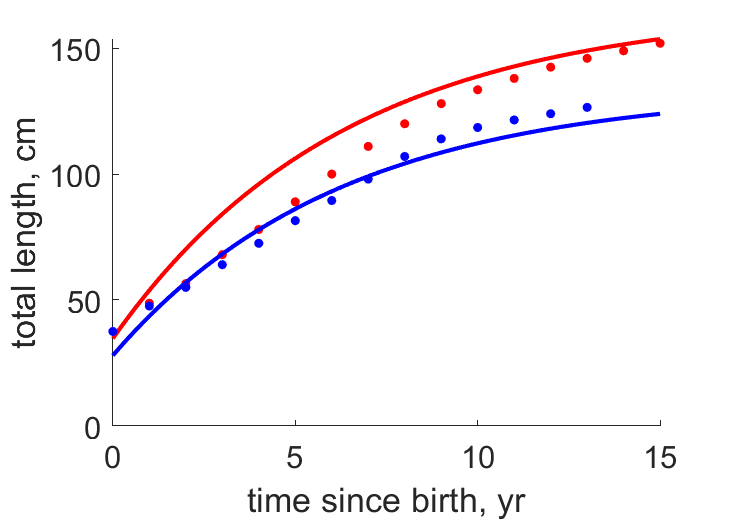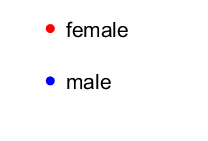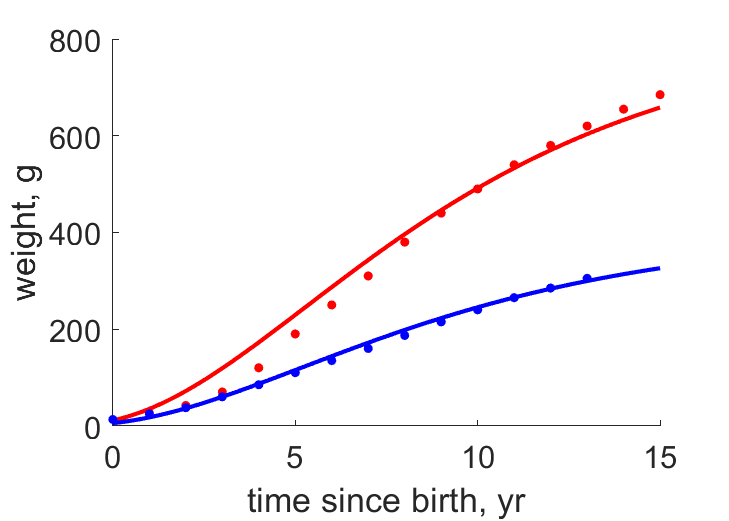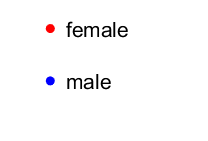Predictions & Data for this entry
| Model: std | climate: Aw, BWh, BS, Csa | migrate: | phylum: |
| COMPLETE = 2.5 | ecozone: THp, TP | food: biCi, biCv | class: |
| MRE = 0.064 | habitat: 0bTa, biTd | gender: Dg | order: |
| SMSE = 0.006 | embryo: Ts | reprod: O | family: |
Zero-variate data
| Data | Observed | Predicted | (RE) | Unit | Description | Reference |
|---|---|---|---|---|---|---|
| ab_30 | 60 | 58.01 | (0.03308) | d | age at birth | Dmie1967 |
| ab_27 | 81 | 90.31 | (0.1149) | d | age at birth | Dmie1967 |
| tp | 547 | 545.8 | (0.002275) | d | time since birth at puberty | AnAge |
| am | 6205 | 6204 | (0.0001123) | d | life span | AnAge |
| Lb | 37.5 | 34.7 | (0.07456) | cm | total length at hatching for females | Dmie1967 |
| Li | 180 | 166 | (0.07756) | cm | ultimate total length for female | Wiki |
| Wwb | 13.2 | 11.59 | (0.122) | g | wet at birth | Dmie1967 |
| Wwi | 1162 | 1269 | (0.09234) | g | ultimate wet | guess |
| Ri | 0.04932 | 0.04433 | (0.1011) | #/d | maximum reprod rate | Dmie1967 |
Uni- and bivariate data
| Data | Figure | Independent variable | Dependent variable | (RE) | Reference |
|---|---|---|---|---|---|
| tL_fm |   | time since birth | total length | (0.06747) | Dmie1967 |
| tW_fm |   | time since birth | weight | (0.05201) | Dmie1967 |
Pseudo-data at Tref = 20°C
| Data | Generalised animal | Spalerosophis diadema | Unit | Description |
|---|---|---|---|---|
| v | 0.02 | 0.06877 | cm/d | energy conductance |
| kap | 0.8 | 0.3174 | - | allocation fraction to soma |
| kap_R | 0.95 | 0.95 | - | reproduction efficiency |
| p_M | 18 | 7.152 | J/d.cm^3 | vol-spec som maint |
| k_J | 0.002 | 0.0002764 | 1/d | maturity maint rate coefficient |
| kap_G | 0.8 | 0.7977 | - | growth efficiency |
| k | 0.3 | 0.3041 | - | maintenance ratio |
Discussion
- Males are assumed to differ from females by {p_Am} only
- Growth is extremely slow. Correct?
- mod_1: kap increased, k_J reduced
Bibliography